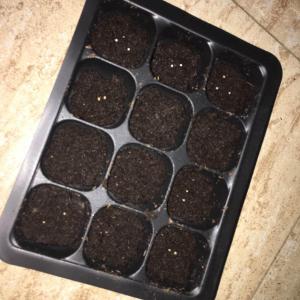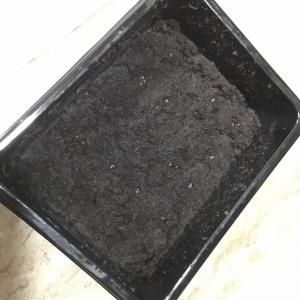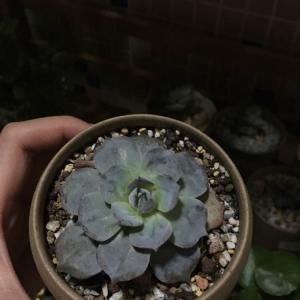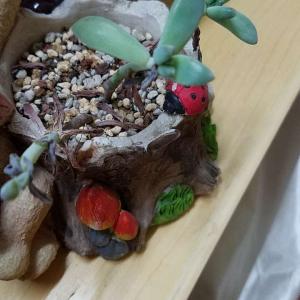文章
权问薇
2017年09月12日

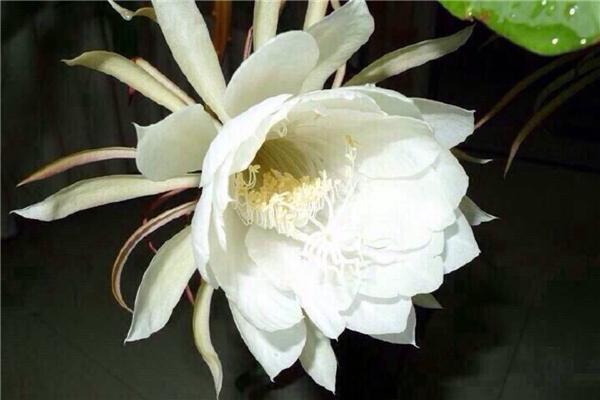
温度
#昙花 比较喜欢在潮湿温暖的环境中生存,一般进入秋季之后,温度最好是在12到18度之间,而且到了深秋之后大约是在10月中旬前后就需要放进室内养护了,以免温度过低影响谈话的生长。
光照
昙花很喜欢在半阴的环境里生长。在秋天的话,就最好是放在室外的半阴的地方养护了,不能受到阳光的直射和暴晒,否则植株有可能就会茎叶变黄,枯萎,影响美观。

土壤
土壤的话要选择腐殖质比较丰富,排水能力比较好,土质疏松的砂质土,最好是微酸性的,避免植株沤根,可以用两份的腐叶土,两份园土和一份砂土配置形成,而且配好之后要在阳光下曝晒杀菌消毒。种的时候先放一些砖片或是碎的瓦片在花盆的下面,使土壤更好的排水。

水分
浇水方面的话最好是让土壤稍微干燥一些,特别是秋末的时候,一般可以等到土壤干燥了之后再浇水,让土壤别过于干燥就好。
施肥
肥料在秋季可以用一些腐熟的液肥,来帮助植株的开花和生长。在秋天可以一个月用一次氮肥,浓度适宜就好。
0
0
文章
素雅
2017年09月12日

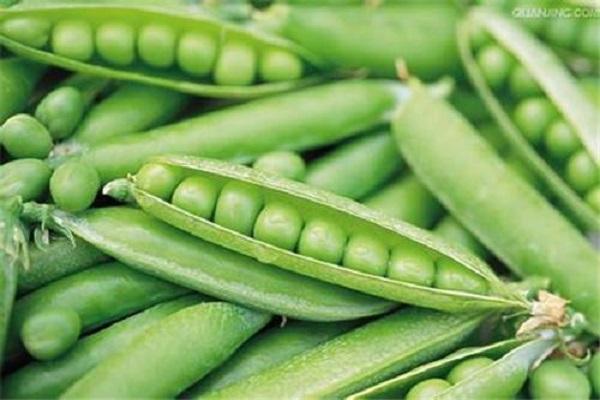
种植环境
#扁豆 喜欢温暖的阳光充裕的环境,它可以承受住高温,但却经不住低温的伤害,最佳温度在18度至28度之间,土壤要疏松,排水性要好,最好是肥沃的酸性沙质土壤。
播种
播种前要挑选种子,无虫蛀、完整的种子。可以直接按到土壤里,上面在覆盖一层薄土即可。在温度为22度至23度的环境下,约10天便可发出萌芽。
定植与搭架
在发芽后,把较小的,不健康的萌芽拔除掉,留下健壮芽。这时也要开始准备搭架子。以便扁豆更好的生长。在发芽后其生长速度很快。
浇水
盆栽扁豆前期要注意保持土壤的潮湿,不要过多的浇水,防治扁豆的茎部与叶子徒长。浇水时更不要出现水涝与积水现象。扁豆的根须很兴盛。在扁豆开花与结豆时,可以适量增加浇水次数,来保持土壤的潮湿度,这样有利于扁豆的生长。

施肥
在扁豆苗长出3片至5片叶子时,要开始施肥。但要尽量是稀释过的肥水。在开花期间可以追加施肥量。结豆时约5天至7天施肥一次。
上架
当扁豆生长到20厘米长时,便可以人工把其藤蔓缠绕在架子上。
病虫害防治
扁豆的生长过程中,病虫害很少,但若发现有卷叶现象出现时,要及时剪除此叶,这就是扁豆的卷叶螟病状。注意观察,及时发现,及时拆除,以防其严重化。
采收
观察其扁豆的豆荚变大饱满后,便可采摘。
0
1
文章
Dummer. ゛☀
2017年08月25日

Bay leaf is known as a seasoning, but those leaves grow on a tree of the same name. It can row to 60 feet (18 m.) high in the wild. Can you grow bay in a container? It is entirely possible. A bay leaf tree in a pot is attractive, accepts pruning and stays much smaller than forest trees. For information about growing bay leaves in containers, read on.
Bay Laurel in a Container
Bay leaf (Laurus nobilis), also called bay laurel or bay tree, is an evergreen tree native to the Mediterranean region. It is known to American cooks as a seasoning, but to gardeners, it is also a charming garden ornamental. Bay leaf has been grown for centuries. The famous celebratory “crown of laurels” was made from bay leaf. In addition, the leaves are used medicinally in Europe.
Bay laurel has attractive, shiny foliage that stays on the tree all year round. Add to that the delight of a sweet fragrance with a touch of spicy nutmeg. The tree grows yellow flowers that turn into dark berries in the autumn. Container grown bay trees are nice additions to a small garden. If you are growing bay leaves in containers, you can leave them outside in winter if you live in U.S. Department of Agriculture plant hardiness zones 7 through 10. If your climate is cooler, you’ll have to carry the container-grown bay trees inside in winter.
How to Grow Bay Leaf Tree in a Pot
A bay leaf can grow into a towering tree over time, so how can you grow bay in a container? The fact is, bay leaf grows very slowly and accepts almost severe pruning. You can snip it down to size by pruning every year. And when you grow bay laurel in a container, the tree naturally stays smaller than when its roots are in the soil. To start growing bay leaves in containers, you can plant bay leaf seeds. But seeds take a long time to get started. It’s faster if you purchase small seedlings. They will ultimately grow into mature bay trees. Drainage is very important to a bay leaf. Select a container with ample drain holes and use container soil that drains easily. Start with a small pot and repot when necessary. Don’t be in a hurry to transplant your bay laurel in a container. The plants do well when they are a little cramped. Wait until you see roots coming out of the container’s drainage holes.
Where to put a bay leaf tree in a pot? If it is outdoors, select a spot that is somewhat protected from the elements. Pick a spot with some shade and with wind protection. If you bring the pot inside during cold weather, put it in a cool spot. It will go dormant, so won’t require much water or sun. If you site the bay leaf tree in a pot in a warmer area, it will not be dormant, so you’ll need to make sure it gets some sun and regular water.

Bay Laurel in a Container
Bay leaf (Laurus nobilis), also called bay laurel or bay tree, is an evergreen tree native to the Mediterranean region. It is known to American cooks as a seasoning, but to gardeners, it is also a charming garden ornamental. Bay leaf has been grown for centuries. The famous celebratory “crown of laurels” was made from bay leaf. In addition, the leaves are used medicinally in Europe.
Bay laurel has attractive, shiny foliage that stays on the tree all year round. Add to that the delight of a sweet fragrance with a touch of spicy nutmeg. The tree grows yellow flowers that turn into dark berries in the autumn. Container grown bay trees are nice additions to a small garden. If you are growing bay leaves in containers, you can leave them outside in winter if you live in U.S. Department of Agriculture plant hardiness zones 7 through 10. If your climate is cooler, you’ll have to carry the container-grown bay trees inside in winter.

How to Grow Bay Leaf Tree in a Pot
A bay leaf can grow into a towering tree over time, so how can you grow bay in a container? The fact is, bay leaf grows very slowly and accepts almost severe pruning. You can snip it down to size by pruning every year. And when you grow bay laurel in a container, the tree naturally stays smaller than when its roots are in the soil. To start growing bay leaves in containers, you can plant bay leaf seeds. But seeds take a long time to get started. It’s faster if you purchase small seedlings. They will ultimately grow into mature bay trees. Drainage is very important to a bay leaf. Select a container with ample drain holes and use container soil that drains easily. Start with a small pot and repot when necessary. Don’t be in a hurry to transplant your bay laurel in a container. The plants do well when they are a little cramped. Wait until you see roots coming out of the container’s drainage holes.

Where to put a bay leaf tree in a pot? If it is outdoors, select a spot that is somewhat protected from the elements. Pick a spot with some shade and with wind protection. If you bring the pot inside during cold weather, put it in a cool spot. It will go dormant, so won’t require much water or sun. If you site the bay leaf tree in a pot in a warmer area, it will not be dormant, so you’ll need to make sure it gets some sun and regular water.
0
0
文章
Miss Chen
2017年08月14日

The petunia -- with its long blooming period and low maintenance requirements -- remains one of the most popular flowering plants among gardeners, according to Clemson University Cooperative Extension. The plant grows 6 to 18 inches in height and spreads up to 4 feet, making it ideal for borders, containers and mass plantings.

Flowering
Petunias are annual flowers that bloom from spring until frost in the fall. Flowers reach up to 4 inches in diameter, depending on the cultivar, with the 'Grandiflora' variety producing the largest blooms. All petunias, but especially white and purple ones, produce a pleasant fragrance.
Growing Conditions
Although petunias are annuals, providing the best possible growing conditions allows petunias to produce more flowers for a longer period of time. Choose short and compact plants at the nursery, preferably ones without flowers, for best results when transplanting. Place petunias in full sun to avoid spindly plants with few flowers. Water deeply on a weekly basis and apply balanced fertilizer monthly to encourage root development and support fast growth and abundant flower production.

Deadheading
Removing old blooms allows petunias to put energy into new flower production rather than increased size and foliage development. This also improves the appearance of the plant.

Flowering
Petunias are annual flowers that bloom from spring until frost in the fall. Flowers reach up to 4 inches in diameter, depending on the cultivar, with the 'Grandiflora' variety producing the largest blooms. All petunias, but especially white and purple ones, produce a pleasant fragrance.
Growing Conditions
Although petunias are annuals, providing the best possible growing conditions allows petunias to produce more flowers for a longer period of time. Choose short and compact plants at the nursery, preferably ones without flowers, for best results when transplanting. Place petunias in full sun to avoid spindly plants with few flowers. Water deeply on a weekly basis and apply balanced fertilizer monthly to encourage root development and support fast growth and abundant flower production.

Deadheading
Removing old blooms allows petunias to put energy into new flower production rather than increased size and foliage development. This also improves the appearance of the plant.
0
0
文章
Dummer. ゛☀
2017年08月06日

BOTANICAL NAME: Citrus spp
PLANT TYPE: Fruit
SUN EXPOSURE: Full Sun
SOIL TYPE: Loamy
SOIL PH: Slightly Acidic to Neutral
Standard-size grapefruit and orange trees can grow 18 to 22 feet tall, whereas dwarf varieties only grow 8 to 12 feet tall.
Most citrus varieties are self-fertile, so only one tree is needed for fruit production. On average, fruit bearing begins when the trees are between 3 and 6 years old; however, exact timing will depend on the type of citrus (lemons, oranges, grapefruit, etc.), the cultivar, your climate, the health of the plant and its care, and other factors. Flowering is not seasonal, but occurs during warm weather and regular rainfall. Flowers and fruits may coincide.
PLANTING
Citrus trees should be planted in a sunny and wind-protected area.
In the citrus belt (a loosely defined area stretching from southern California to Florida), trees can be planted at any time, however, spring is the best time for container-grown plants.
Standard-size citrus trees should be spaced 12 to 25 feet apart and dwarf citrus trees should be set 6 to 10 feet apart. The exact distance depends on the variety. The bigger the fruit, the farther the distance.
If the soil is not well-drained, plant the trees on a slight mound to prevent waterlogging.
To plant citrus trees inside from seeds, remove the seeds from the desired fruit. Soak the seeds overnight in water and plant them ½ inch deep in moist potting soil. Cover the pot with a plastic bag or wrap and let it sit in a warm and sunny spot for a few weeks until the seeds start to grow. Then, remove the plastic but keep the pot near a warm and sunny window.
CARE
A few weeks after planting, and for the first few years (before bearing age), feed the tree a balanced (such as 6-6-6) fertilizer. Learn more about soil amendments and preparing soil for planting.
For newly bearing trees, provide nutrients to continue branch and leaf growth, but also to replace nutrients lost by fruit forming. A citrus blend is ideal.
Check manufacturer’s directions, ask a garden nursery, or consult your local cooperative extension as to how often and how much fertilizer to apply during each year of a tree’s growth.
Mulches are not recommended for citrus trees, but if trees are located in a cultivated plant bed where mulch is used, keep at least 12 inches of bare ground between the tree trunk and the mulch. Pre-emergent herbicides may be used to prevent weed seeds from germinating.
Fruit thinning is unnecessary for citrus trees, as they typically experience something called the “June drop.” In late spring or early summer (May or June for most of the country), citrus trees naturally drop a number of their immature fruit.
PESTS/DISEASES
Aphids
Spider Mites
Root and Crown Rots
Fungal Leaf Spots
Fruit Flies
Tristeza Virus spread by Aphids
PLANT TYPE: Fruit
SUN EXPOSURE: Full Sun
SOIL TYPE: Loamy
SOIL PH: Slightly Acidic to Neutral
Standard-size grapefruit and orange trees can grow 18 to 22 feet tall, whereas dwarf varieties only grow 8 to 12 feet tall.
Most citrus varieties are self-fertile, so only one tree is needed for fruit production. On average, fruit bearing begins when the trees are between 3 and 6 years old; however, exact timing will depend on the type of citrus (lemons, oranges, grapefruit, etc.), the cultivar, your climate, the health of the plant and its care, and other factors. Flowering is not seasonal, but occurs during warm weather and regular rainfall. Flowers and fruits may coincide.

PLANTING
Citrus trees should be planted in a sunny and wind-protected area.
In the citrus belt (a loosely defined area stretching from southern California to Florida), trees can be planted at any time, however, spring is the best time for container-grown plants.
Standard-size citrus trees should be spaced 12 to 25 feet apart and dwarf citrus trees should be set 6 to 10 feet apart. The exact distance depends on the variety. The bigger the fruit, the farther the distance.
If the soil is not well-drained, plant the trees on a slight mound to prevent waterlogging.
To plant citrus trees inside from seeds, remove the seeds from the desired fruit. Soak the seeds overnight in water and plant them ½ inch deep in moist potting soil. Cover the pot with a plastic bag or wrap and let it sit in a warm and sunny spot for a few weeks until the seeds start to grow. Then, remove the plastic but keep the pot near a warm and sunny window.

CARE
A few weeks after planting, and for the first few years (before bearing age), feed the tree a balanced (such as 6-6-6) fertilizer. Learn more about soil amendments and preparing soil for planting.
For newly bearing trees, provide nutrients to continue branch and leaf growth, but also to replace nutrients lost by fruit forming. A citrus blend is ideal.
Check manufacturer’s directions, ask a garden nursery, or consult your local cooperative extension as to how often and how much fertilizer to apply during each year of a tree’s growth.
Mulches are not recommended for citrus trees, but if trees are located in a cultivated plant bed where mulch is used, keep at least 12 inches of bare ground between the tree trunk and the mulch. Pre-emergent herbicides may be used to prevent weed seeds from germinating.
Fruit thinning is unnecessary for citrus trees, as they typically experience something called the “June drop.” In late spring or early summer (May or June for most of the country), citrus trees naturally drop a number of their immature fruit.

PESTS/DISEASES
Aphids
Spider Mites
Root and Crown Rots
Fungal Leaf Spots
Fruit Flies
Tristeza Virus spread by Aphids
2
1
文章
Dummer. ゛☀
2017年08月06日

BOTANICAL NAME: Chlorophytum Comosum
PLANT TYPE: Houseplant
SUN EXPOSURE: Part Sun
SOIL TYPE: Any
FLOWER COLOR: White
Spider Plants or Airplane Plants produce arched green and pale yellow stems that extend to be 12-18 inches long. When less than a year old, Spider Plants may produce tiny white flowers during the summer. These easy-to-grow plants look especially nice in a hanging basket.
PLANTING
Grow in soil-based potting mix in bright to moderate sunlight, but not directly facing hot sun.
Maintain average room temperature and humidity.
CARE
During growth, water occasionally; once fully developed (within one year), water moderately.
In the spring and summer months keep the soil moist. Do not let soil dry out.
Fertilize twice a month in the spring and summer, however, avoid overfertilization.
PESTS/DISEASES
Prone to tip burn from dry soil or salt and fluoride found in some public water. Keep the soil slightly moist. Avoid using fluoridated water.
To rid of the brown discs on leaves, use your fingernail to remove the brown residue every few days.
PLANT TYPE: Houseplant
SUN EXPOSURE: Part Sun
SOIL TYPE: Any
FLOWER COLOR: White
Spider Plants or Airplane Plants produce arched green and pale yellow stems that extend to be 12-18 inches long. When less than a year old, Spider Plants may produce tiny white flowers during the summer. These easy-to-grow plants look especially nice in a hanging basket.

PLANTING
Grow in soil-based potting mix in bright to moderate sunlight, but not directly facing hot sun.
Maintain average room temperature and humidity.

CARE
During growth, water occasionally; once fully developed (within one year), water moderately.
In the spring and summer months keep the soil moist. Do not let soil dry out.
Fertilize twice a month in the spring and summer, however, avoid overfertilization.

PESTS/DISEASES
Prone to tip burn from dry soil or salt and fluoride found in some public water. Keep the soil slightly moist. Avoid using fluoridated water.
To rid of the brown discs on leaves, use your fingernail to remove the brown residue every few days.
3
2
文章
Miss Chen
2017年07月11日

内容提要: 金鱼吊兰别称金鱼花、吊金鱼、袋鼠花等,为苦苣苔科金鱼草属多年生草本植物,基部为半木质,叶片呈深绿色,叶子较肥厚,产于热带美洲丛林,生长的适温为18~26℃,一般家庭可放在室内明亮的窗口或阴面阳台上,下面我们就一起来看一看#金鱼吊兰什么时候开花 吧!
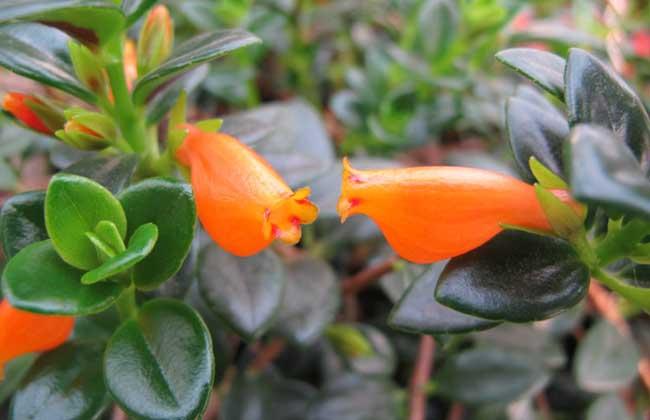
金鱼吊兰别称金鱼花、吊金鱼、袋鼠花等,为苦苣苔科金鱼草属多年生草本植物,基部为半木质,叶片呈深绿色,叶子较肥厚,产于热带美洲丛林,生长的适温为18~26℃,一般家庭可放在室内明亮的窗口或阴面阳台上,下面我们就一起来看一看鱼吊兰什么时候开花吧!
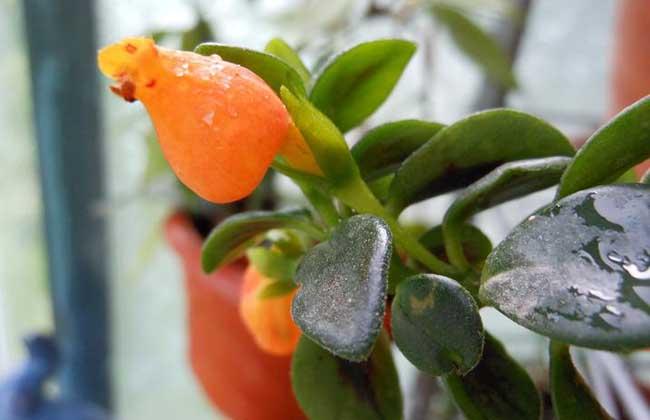
金鱼吊兰什么时候开花?
金鱼吊兰的花期通常在春、夏两季,开花时间长,冬季开花之前最好进行适当的阳光照射,可置于阳台或窗口这样能让花开得更加鲜艳繁盛。其幼苗在第一年是不开花的,等两三年后才能看到橙红色的花朵在垂枝先端的叶腋间开出来,当花朵盛开的时候,橘红色的花特别吸引人,一朵朵花挂在枝条上,搭配上绿色的叶子,仿佛一条条小金鱼在水草中嘻戏。
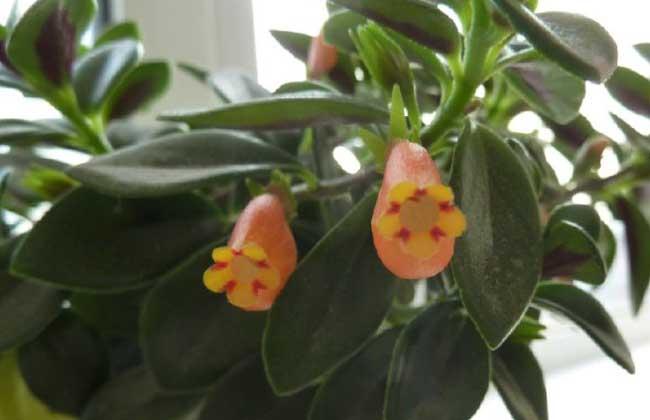
金鱼吊兰为什么不开花?
1、光照不足:金鱼吊兰喜欢阴性环境,但光照对于绿叶植物来说是生存必备,享受阳光的温暖的同时为自身积累养分,而光照不足植株生长不良,开花就更不想了。
2、浇水不当:金鱼吊兰喜欢冷干的环境,冬季有一小段休眠期,苏醒后开花。若浇水过多,很容易造成茎枝软腐而死亡,如果植株感染病虫害是很难开花的。
3、通风不好:金鱼吊兰最忌闷养,若养殖环境没有流通的空气,叶片会逐渐萎蔫、发黄,正常的生长受到抑制。如果刚好处于开花季节,花芽不能正常生长就很难开花。
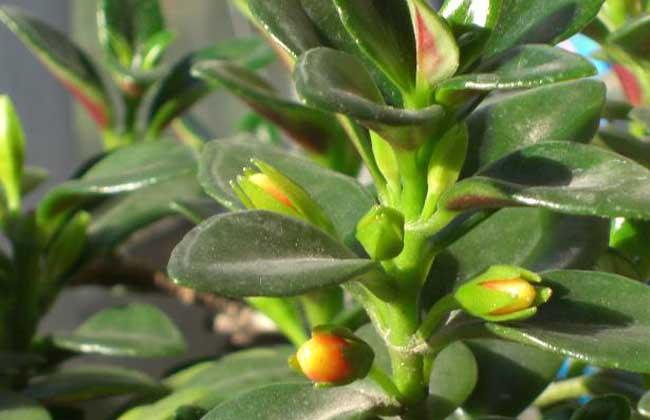
金鱼吊兰怎么养才开花?
1、土壤:金鱼吊兰盆栽要求基质富含腐殖质、疏松、排水良好,一般常用泥炭土、珍珠岩和蛭石等量混合,并使土壤叶偏酸性,以利生长。
2、温度:金鱼吊兰的最佳生长温度为18~22℃左右,不耐寒,如果最低温度低于10℃会造成金鱼吊兰叶片发黄、干枯,甚至脱叶,忌高温,温度超过30℃也会造成脱叶。
3、光照:金鱼吊兰喜欢阴性环境,不可在烈日下暴晒,冬季开花前可适当增加阳光照射,会增加开花质量。但阳光不能直接照射金鱼吊兰,否则会枯叶甚至落叶死亡。
4、湿度:金鱼吊兰的生长需要充足的水分,在生长旺季要经常保持盆土湿润,冬季时要在盆土表面约一厘米深处干后进行再次浇水。但太不能太多的水,不然容易烂根。
5、施肥:金鱼吊兰生长旺季每1~2周施一次有机薄肥液,开花前应增施磷肥增加开花数量质量,花谢后施含氮肥料,对已开始长出小植株的每半个月可以施一次以氮为主的追肥。

金鱼吊兰别称金鱼花、吊金鱼、袋鼠花等,为苦苣苔科金鱼草属多年生草本植物,基部为半木质,叶片呈深绿色,叶子较肥厚,产于热带美洲丛林,生长的适温为18~26℃,一般家庭可放在室内明亮的窗口或阴面阳台上,下面我们就一起来看一看鱼吊兰什么时候开花吧!

金鱼吊兰什么时候开花?
金鱼吊兰的花期通常在春、夏两季,开花时间长,冬季开花之前最好进行适当的阳光照射,可置于阳台或窗口这样能让花开得更加鲜艳繁盛。其幼苗在第一年是不开花的,等两三年后才能看到橙红色的花朵在垂枝先端的叶腋间开出来,当花朵盛开的时候,橘红色的花特别吸引人,一朵朵花挂在枝条上,搭配上绿色的叶子,仿佛一条条小金鱼在水草中嘻戏。

金鱼吊兰为什么不开花?
1、光照不足:金鱼吊兰喜欢阴性环境,但光照对于绿叶植物来说是生存必备,享受阳光的温暖的同时为自身积累养分,而光照不足植株生长不良,开花就更不想了。
2、浇水不当:金鱼吊兰喜欢冷干的环境,冬季有一小段休眠期,苏醒后开花。若浇水过多,很容易造成茎枝软腐而死亡,如果植株感染病虫害是很难开花的。
3、通风不好:金鱼吊兰最忌闷养,若养殖环境没有流通的空气,叶片会逐渐萎蔫、发黄,正常的生长受到抑制。如果刚好处于开花季节,花芽不能正常生长就很难开花。

金鱼吊兰怎么养才开花?
1、土壤:金鱼吊兰盆栽要求基质富含腐殖质、疏松、排水良好,一般常用泥炭土、珍珠岩和蛭石等量混合,并使土壤叶偏酸性,以利生长。
2、温度:金鱼吊兰的最佳生长温度为18~22℃左右,不耐寒,如果最低温度低于10℃会造成金鱼吊兰叶片发黄、干枯,甚至脱叶,忌高温,温度超过30℃也会造成脱叶。
3、光照:金鱼吊兰喜欢阴性环境,不可在烈日下暴晒,冬季开花前可适当增加阳光照射,会增加开花质量。但阳光不能直接照射金鱼吊兰,否则会枯叶甚至落叶死亡。
4、湿度:金鱼吊兰的生长需要充足的水分,在生长旺季要经常保持盆土湿润,冬季时要在盆土表面约一厘米深处干后进行再次浇水。但太不能太多的水,不然容易烂根。
5、施肥:金鱼吊兰生长旺季每1~2周施一次有机薄肥液,开花前应增施磷肥增加开花数量质量,花谢后施含氮肥料,对已开始长出小植株的每半个月可以施一次以氮为主的追肥。
0
0
文章
Colour_
2017年07月04日
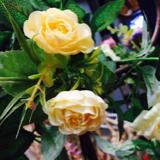

科学盆栽郁金香应注意:
①郁金香品种的选择。盆栽郁金香宜选择矮生品种,于秋季种植在盆径为15~18厘米的泥盆或塑料盆中,每盆种3~5个鳞茎。种植深度以鳞茎的顶部与土面持平。栽培介质宜用疏松、肥沃及排水良好的培养土,或由苔藓泥炭与沙质壤:土混和而成,pH值为6.0~6.5,并施入腐熟有机肥加少量的过磷酸钙。
②温度和浇水。郁金香种植浇水后,放于室外背风、向阳的地方,之后需保持盆土湿润,不能过干或过湿,一般6~10周可生根,温度需5~9℃。根据需要,分批将盆移人温室半阴处,温度宜在5~10℃,不宜过度.否则叶片在较小时就会很快现蕾,影响开花质量。在开花前4个星期可升温至15~18℃。
③光照与施肥。自展叶后,每10天左右施1次稀薄饼肥水或浓度为1的化肥。现蕾后应将植株移至阳光充足处,并在开花前增施1~2次以磷、钾为主的肥料,喷施1次浓度为0. 2%的磷酸二氢钾的根外追肥,使郁金香花色更艳丽。
0
0



